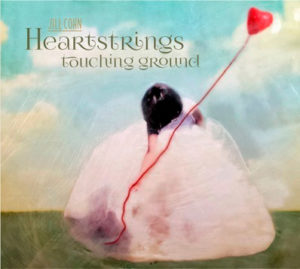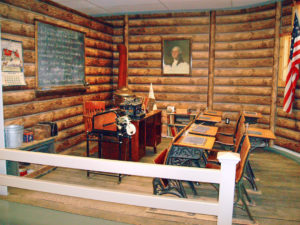By George Sibley
It’s only the ides of March as I write this, but it’s already springtime in this part of the Rockies. I know that because right now it feels like January outside, with snow pellets – nasty little dry lumps, no art to them at all – moving through, too horizontally to imagine they might stay and leave us a little moisture. But beyond the blur of winddriven flakes I can see blue sky, so I know that in a few minutes it will probably be June out in the yard, calm and sunny and warm. That’s how we know it’s springtime in the Rockies; we know only that whatever extreme we’re in at the moment, it’ll be some other extreme within the hour at worst. Or best.
This year, however, it’s actually been like springtime in the Rockies since February, with solid weeks of warm sun with no precipitation of any sort. Up-valley in the Elk Mountains they’ve had enough little snows to keep us within 50-60 percent of the 30-year snow-water content average; but down here in Gunnison, we are just dry.
This is of course troubling. We are part of the headwaters for a river that eventually provides some or all of the water for around 40 million fellow humans, as well as irrigating four million acres of land that grows food and fiber for them too. Not to mention providing recreational adventures for several million of them. No wonder this river never makes it to the ocean anymore – although I can’t imagine why a freshwater river would want to disappear into that salty sink anyway. Or why we would want to waste freshwater to the ocean; can’t we imaginative members of the global life project imagine ways to put it use in support of life on land? The ocean is too huge to miss it; the tiny percentage of global water that is fresh is too precious to just surrender to gravity.
But that’s a digression, my attention inspired to wander by what’s happening outside, where the snow and wind have indeed stopped and yes, the sun is coming out.
Anyway – this “midwinter spring” we’ve been having suggests that, despite a pretty fat water year in 2017, the Colorado River Basin is still in what we are still wanting to call a chronic drought, one that has been going on since the turn of the century. Two decades is a depressingly long time for a drought to continue in our limited experience; dry spells lasting close to a decade was the worst we experienced in the 20th century.
Toward the end of the century, however, researchers doing tree-ring and pollen studies managed to piece together a millennia of prehistoric estimated river flows; they discovered that droughts lasting much longer than just two decades were not uncommon in our prehistory – droughts that even went on for 35 or 40 years. While we are inclined to take all the credit for 20th-century progress for ourselves, we are beginning to learn how favorably the climate gods have smiled on us the past couple centuries, how much easier a mellow and usually temperate climate made it to feed, clothe and shelter an irresponsibly exploding population.
[InContentAdTwo] There is, in fact, an element of optimism, or at least hope, in calling a two-decade sub-average water supply in the Colorado River Basin a chronic drought: a drought, however long it turns out to be, is something that has an end. All droughts end eventually, and we return to – well, “normal” isn’t a very good term to use in talking about weather in the West, or anywhere. Say instead, we will still be in a world whose future can be projected and found acceptable on the basis of an understanding of the past. History repeating itself: what’s going around will eventually come around again to what’s gone around in the past – and therefore, the future is predictable from the data of the past. And droughts end eventually.
Scientists call this “stationarity” – “the idea that natural systems fluctuate within an unchanging envelope of variability.”* The variability within this envelope is what we experience as weather – droughts and floods, April showers and August thunderstorms, male and female rains and winds – these are the fractalating variables in the envelope. But the weather remains predictable, and therefore bearable, only if the envelope (the climate containing and creating the weather) is not changed.
Speaking of an envelope of variability – the sun outside has disappeared, along with it the feel of June and the fleeting thought of taking the laptop out to the deck to work. The wind is whispering to itself, conspiring with itself on whatever’s next. Beware a wind that talks to itself.
We want to believe that what we’ve been going through since 2000 is just a drought, albeit a longer drought than we have experienced here, because that’s just a little more variability in the envelope, right? It doesn’t change the envelope itself. Does it?
We’ve learned or are learning other disquieting things about that unchanging envelope and its Pandoran expansion of variabilities. We know, for example – as much from experiencing it out under the sun ourselves as through reading the statistics – that average temperatures – highs, lows, means – have been climbing at subtly accelerating rates since the middle of the 20th century. Every year or so we seem to have a new “warmest year on record.” We don’t really need a scientific study to know that the autumns have been warmer longer; that the winters haven’t had so many subzero spells (no minus 20 at all this winter!); that the Big Melts in Central Colorado start a little sooner; that the runoff no longer quite matches the original snow-water content; that the summer is a little hotter and the plants require a little more water that we hope will be there.
We also know that most of our average water years recently have been too irregular to deserve a description as average. One bad water year was salvaged by a very wet and cold “miracle May”; another had a huge January snowfall with below normal precipitation in all the other winter months.
But that’s all just more variable weather in the envelope of climate, isn’t it? Which isn’t changing, just expanding? Which isn’t the same as changing the envelope, is it?
And now the sun is back outside. Ah, Spring! When hope as variable as weather springs nonetheless eternal.
To change the subject drastically – a couple weeks ago, Steve Anderson, general manager of the Uncompahgre Valley Water Users Association, invited board members of the Upper Gunnison River Water Conservancy District to tour the Gunnison Tunnel – the five-and-a-half-mile tunnel from the Black Canyon of the Gunnison River that carries a quarter of the Gunnison’s flow over to the Uncompahgre River Valley and Montrose-Delta micropolis.
It is a serous tunnel, big enough to drive a regular pickup through, some of it carved through the dry solid basement rock of the planet, and some of it through slippery soggy shales and sediments requiring concrete walls and ceiling – and some of that concrete now a century old and looking it, although Anderson assured us that the distances between bullseyes painted on the walls have not been narrowing any.
The most impressive visual was the pinpoint of light that appeared in the tunnel not long after we started the drive back from the canyon end, a pinpoint that gradually grew – we were seeing the light at the end of the tunnel from a good four miles out. A tunnel started from both ends and the middle working both ways (from a shaft dropped in), and everything lined up within fractions of inches, a transit-drawn imagined line miles underground as straight as a modern laser beam.
I am often stunned to quietness when confronted with the big works done on the cusp of the Old West becoming the New West – the sheer unmitigated energy and audacity of the Old West linking up with the emerging technologies of the New West over visions of a harsh and somewhat chaotic landscape made rational and efficient (New West) and more enriching (Old West).
Things were obviously done out of that marriage that shouldn’t have been done. But that doesn’t bother me as much as it maybe should. I think I worry more about the lack of that kind of energy, challenge, and yes, audacity in our interactions with the – let’s face it – vast and chaotic arid lands that we have, at great expense and naïve expenditure of energy, managed to dot with strands and spots of green that now feed, water and host millions of us that would otherwise be god knows where if at all. Someday we will come to appreciate our capacity to do stuff enough to start doing and redoing it right.
*From a paper, ‘Stationarity is Dead: Whither Water Management?’ P.C.D. Milly, Julio Betancourt principal authors. Science, Feb. 2008.
George Sibley lives and works in Gunnison, where he hopes that summer will come on a weekend this year. george@gard-sibley.org



